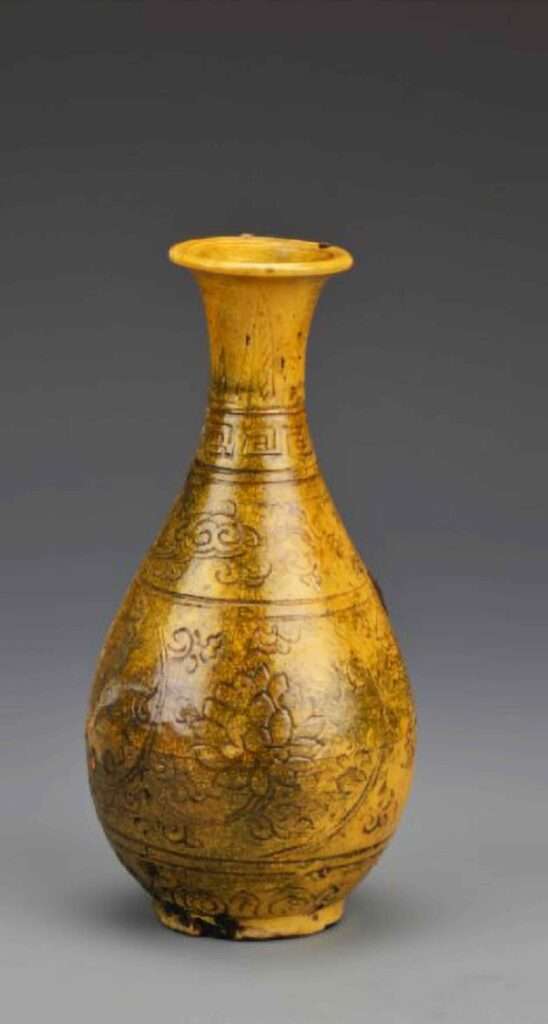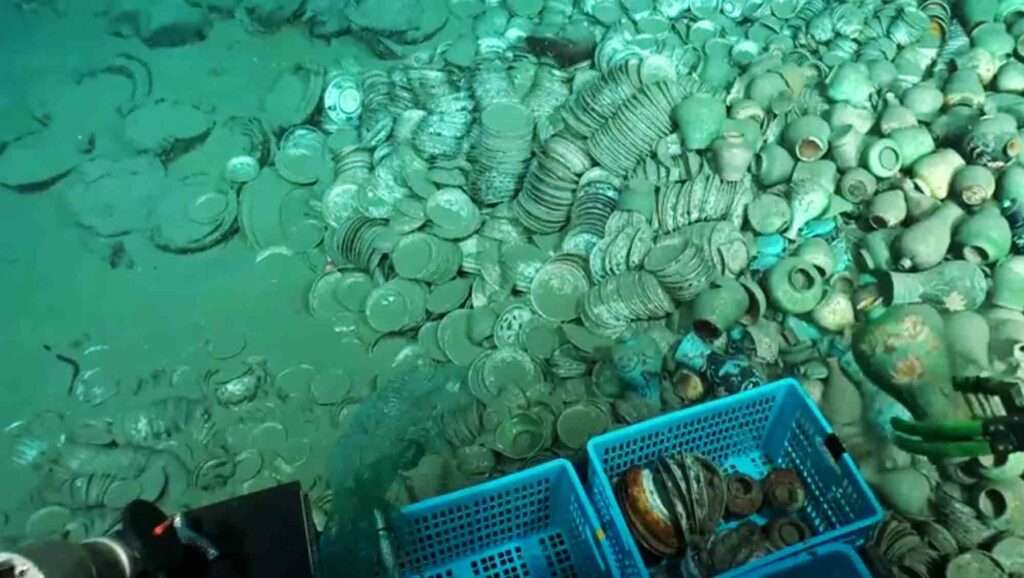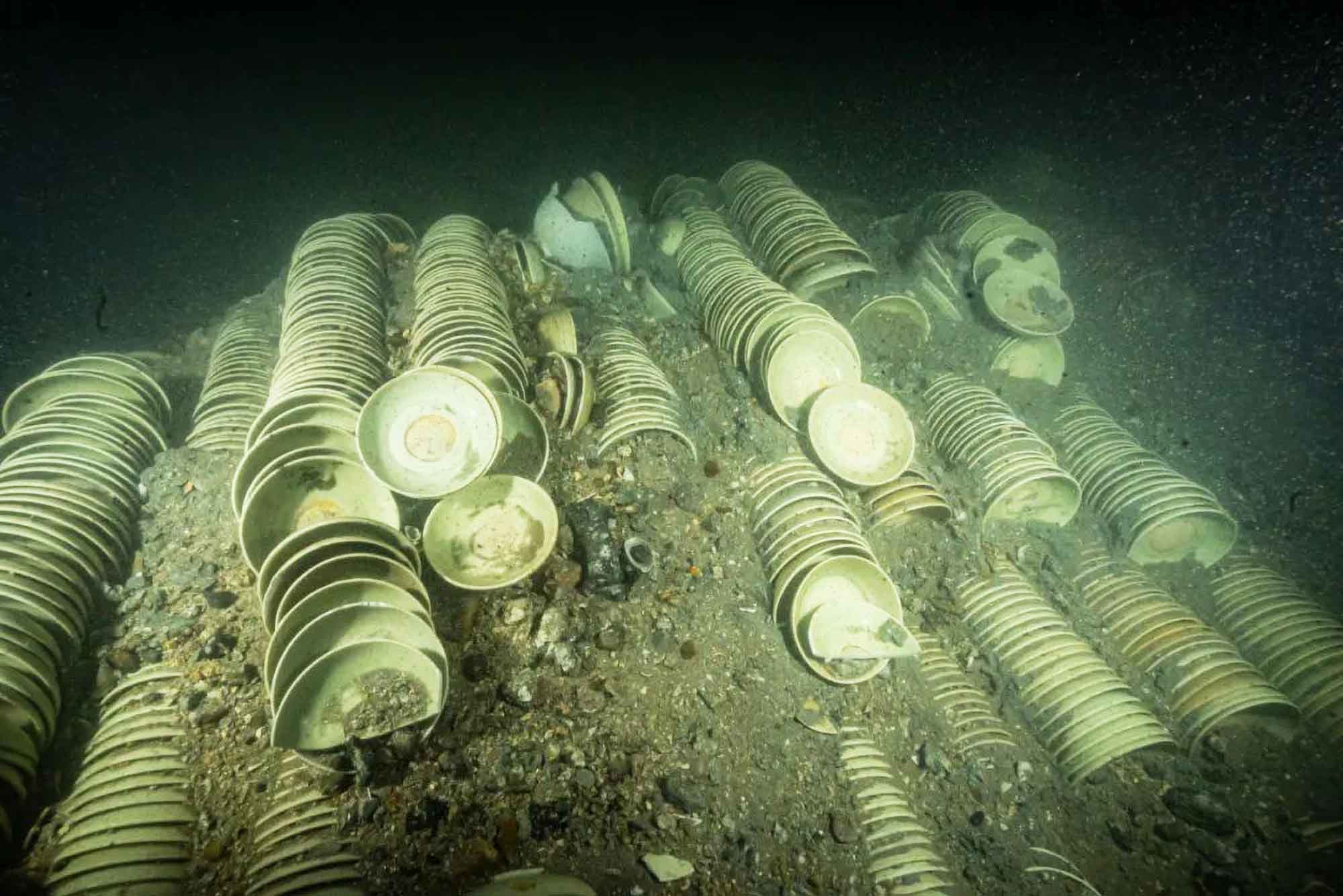Archaeologists in China have unearthed hundreds of priceless Ming Dynasty porcelain dating back hundreds of years and other priceless relics from an ancient shipwreck site at the bottom of the sea.
Ming porcelain is the most famous of all Chinese antiques because they are rare and revered for their beauty, detail and the skilled craftsmanship that went into producing them.
China’s State Administration of Cultural Heritage unveiled the latest discoveries in this remarkable footage released during a press conference on 19th October.
The 580 pieces of Chinese porcelain and pottery goods were discovered during a deep-sea survey of the South China Sea, which is the final resting place of two cargo ships dating back to the Ming Dynasty (1368–1644 AD).
It is the site of thousands of historical relics that are scattered along the sea floor, approximately 5,000 feet beneath the surface.
The rare porcelain was retrieved from two vessels, dubbed Shipwreck No. 1 and Shipwreck No. 2.
Discovered in October 2022, Shipwrecks No. 1 and No. 2 were subjected to two phases of deep-sea archaeological surveys in May-June and September-October 2023, led by the National Cultural Heritage Administration, the Archaeological Research Centre of the


National Cultural Heritage Administration, the Institute of Deep Sea Science and Engineering of the Chinese Academy of Sciences, and the South China Sea Museum (Hainan).
Shipwreck No. 1, laden with ceramics for export, likely departed from a port in Fujian or Guangdong, according to experts.
After coastal navigation along South China, it crossed the northwest slope of the South China Sea, passed through the central and southern regions of Vietnam, and reached the trade hub in Southeast Asia.
In contrast, Shipwreck No. 2 loaded timber at the trade hub in Southeast Asia, then travelled through the central and southern regions of Vietnam, crossed the northwest slope of the South China Sea, passed through the eastern part of Hainan Island, and finally arrived at Chinese ports.

This discovery marks China’s first identification of ancient merchant ships departing and returning within the same sea area and helps researchers better understand ancient maritime trade routes.
These two shipwrecks are well-preserved, with many artefacts, including ceramics, porcelain, copperware, ironware, bamboo, and wooden objects.
To find out more about the author, editor or agency that supplied this story – please click below.
Story By: Simona Kitanovska, Sub-Editor: Michael Leidig, Agency: Asia Wire Report
The Ananova page is created by and dedicated to professional, independent freelance journalists. It is a place for us to showcase our work. When our news is sold to our media partners, we will include the link here.




